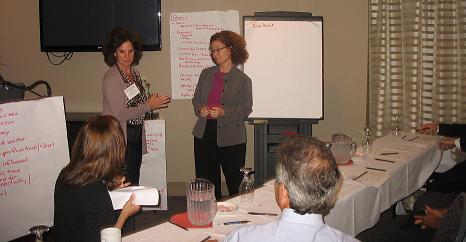
My wish list grew as I researched how companies were using mobile to generate engagement in consumer- driven industries such as financial services, retail, travel and entertainment.
As I prepared for my Mobile Workshop at World Congress’s Product Innovation Conference, I identified, evaluated and selected mobile applications to inspire the workshop participants with their mobile health strategies. Each mobile application was chosen because it cleverly incorporated key engagement capabilities. Some mobile examples were designed to engage short term while others were intended to sustain engagement over the long run.
During the workshop, I presented more than a dozen selected examples which I organized into four groups based on how they engage consumers. Let me share one example from each group with you.
1) Life Management
Companies are creating mobile applications that help consumers get things done while on the go.
Example: Omnego launched a “Go Travel Wallet” application which enables consumers to load and access their travel documents including digital pictures of their passport and insurance documents. Consumers plan their travel by using all of their travel information such as rewards programs, credit cards and travel providers. They save money with the merchant coupons that are placed in their mobile wallet from social media, QR codes (scanned), emails and texts.
2) Information Access
By placing QR codes on their promotional materials, companies are grabbing the attention of their customers and offering them access to special content in return.
Example: For an upcoming movie, Fox Spotlight has splashed QR codes across their marketing materials distributed or placed (posters) around the community, all ready to be scanned to access exclusive content.
3) Social Community & Commerce
Businesses are realizing the power of using mobile to tap into the social networks of their customers.
Example: Amazon’s Back to School mobile application is targeted to the student segment. Students can buy and sell text books, access exclusive deals and share their “finds” with their social network.
4) Social Gaming
While playing a social game through a mobile application, consumers interact virtually with the company’s brand and are driven into the business’s physical locations.
Example: New Balance gets their customers moving in the community collecting “virtual batons” which can be redeemed in their stores for rewards, These batons appear on the consumer’s mobile phone by using GPS and maps. Consumers are motivated to visit the store quickly since the virtual baton can be stolen by others playing the game.
Mobile Insight & Guidance
During our workshop, my colleague Ahmed Albaiti, CEO of Medullan shared technology and consumer demand trends. After sharing a framework and guidelines for the interactive game, we split our workshop participants into teams.
Ahmed and I worked closely with our team as they defined their target users, thought through their needs and current resources to support them and then conceptualized a mobile application.
As I observed my group, I noticed that it was easy for them to suggest mobile capabilities from health applications already on the market but I had to continuously challenge them to incorporate innovative ideas from other consumer industries. My role was to help my team see how these innovative examples can be applied to healthcare to meet their business objectives.
It was exciting to watch the teams describe their wish for a mobile application designed for their target consumers.
Imagine a mobile workshop for your company, where all of your internal stakeholders are focusing on the users, identifying their own wish list and defining capabilities to truly engage these consumers.
 Health and Wellness Incentives & Rewards,
Health and Wellness Incentives & Rewards,  educating consumers about health and wellness,
educating consumers about health and wellness,  mobile engagement for teens,
mobile engagement for teens,  mobile health and wellness texting,
mobile health and wellness texting,  mobile location based services in
mobile location based services in  Consumer Segmentation Health,
Consumer Segmentation Health,  Data Driven Health Engagement,
Data Driven Health Engagement,  Decision Support eHealth,
Decision Support eHealth,  Mobile Engagement Health & Wellness,
Mobile Engagement Health & Wellness,  Personalization eHealth
Personalization eHealth 



Reader Comments